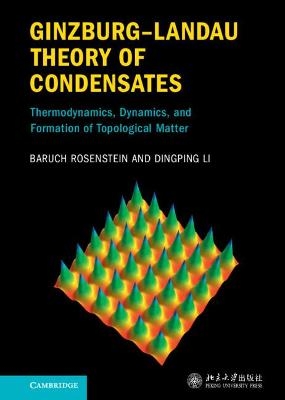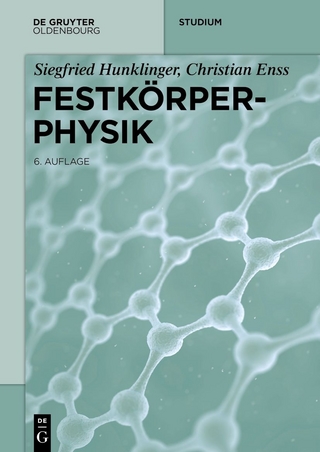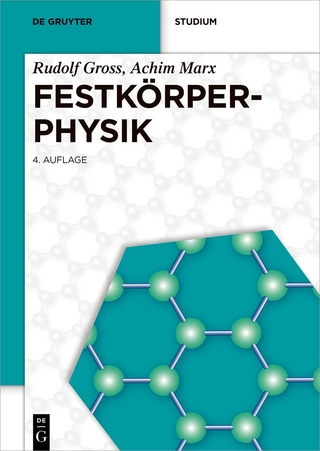
Ginzburg–Landau Theory of Condensates
Cambridge University Press (Verlag)
978-1-108-83685-2 (ISBN)
Ginzburg–Landau theory is an important tool in condensed matter physics research, describing the ordered phases of condensed matter, including the dynamics, elasticity, and thermodynamics of the condensed configurations. In this systematic introduction to Ginzberg–Landau theory, both common and topological excitations are considered on the same footing (including their thermodynamics and dynamical phenomena). The role of the topological versus energetic considerations is made clear. Required mathematics (symmetry, including lattice translation, topology, and perturbative techniques) are introduced as needed. The results are illustrated using arguably the most fascinating class of such systems, high Tc superconductors subject to magnetic field. This book is an important reference for both researchers and graduate students working in condensed matter physics or can act as a textbook for those taking advanced courses on these topics.
Baruch Rosenstein is a professor at National Yang Ming Chiao Tung University at Hsinchu, Taiwan (ROC). His scientific interests in field theory and critical phenomena have gradually shifted toward condensed matter physics during postdoctoral experience at the University of Texas (Austin) and the University of British Columbia. Dingping Li is a professor at Peking University, Beijing. His scientific interests are condensed matter physics in the area of superconductivity and Bose–Einstein condensation in cold atoms. His postdoctoral experience included working at the National Institute for Nuclear Physics of Italy and the International Centre for Theoretical Physics in Trieste, Italy.
Preface. 1. Introduction and overview; Part I. Ordered Phases of Condensed Matter Disrupted by Topological Defects: 2. The phenomenological (Landau) description of the ordered condensed matter from magnets to Bose condensates; 3. Simplest topological defects; 4. Topological defects and their classification; Part II. Structure of the Topological Matter Created by Gauge Field: 5. Repulsion between solitons and viable vortex matter created by a gauge field; 6. Abrikosov vortices created by the magnetic field; 7. Structure and magnetization of the vortex lattice within London approximation; 8. Structure and megnetization of the vortex lattice within Abrikosov approximation; Part III. Excitation Modes of Condensate: Elasticity and Stability of the Topological Matter: 9. Linear stability analysis of the homogenous states; 10. Stability and the excitation spectrum of the single soliton and the vortex lattice; 11. Forces of solitons, pinning and elasticity of the vortex matter; Part IV. Dynamics of Condensates and Solitary Waves: 12. Dynamics of the order parameter field; 13. Solitary waves; 14. Viscous flow of the Abrikosov flux lattice; Part V. Thermal Fluctuations. 15. Statistical physics of mesoscopic degrees of freedom; 16. The Landau-Wilson approach to statistical physics of the interacting field fluctuations; 17. Thermal fluctuations in the vortex matter; Appendix; Index.
| Erscheinungsdatum | 10.11.2021 |
|---|---|
| Zusatzinfo | Worked examples or Exercises |
| Verlagsort | Cambridge |
| Sprache | englisch |
| Maße | 175 x 249 mm |
| Gewicht | 770 g |
| Themenwelt | Naturwissenschaften ► Physik / Astronomie ► Festkörperphysik |
| Technik ► Maschinenbau | |
| ISBN-10 | 1-108-83685-2 / 1108836852 |
| ISBN-13 | 978-1-108-83685-2 / 9781108836852 |
| Zustand | Neuware |
| Haben Sie eine Frage zum Produkt? |
aus dem Bereich


